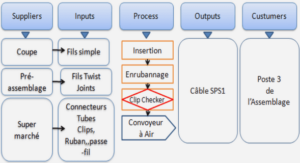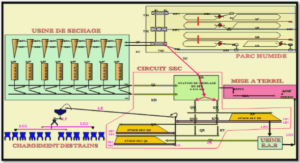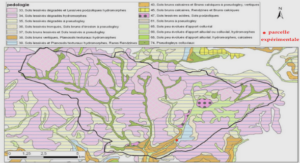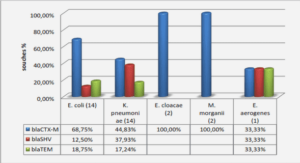Properties and Applications of Aluminum
HEAT TREATMENT
There are two ways of increasing the mechanical strength of aluminum alloys once they are in solid form; these are mechanical work and heat treatment. Both methods may be applied to alloys prepared for mechanical work, although the response to hardening by heat treatment will depend on the individual alloying elements present in each alloy. Heat treatment provides as-cast aluminum samples and/or castings with many advantages, such as:
• homogenization of the microstructure in the alloys;
• releasing the residual stresses caused during solidification;
• improving the dimensional stability and machinability of parts; and
• optimizing the hardness, toughness, ductility, and corrosion resistance of the cast
piece.
The term heat treatment refers to any of the heating and cooling operations which are performed with the purpose of changing the mechanical properties, metallurgical structure, and residual stress state of a metal product. In aluminum alloys, the use of heat treatment is restricted to frequently used operations intended to increase the tensile strength and hardness of alloys responding to precipitation hardening.47′ 4 The process for increasing the mechanical strength of aluminum alloys through heat treatment consists of three stages:
(i) solution heat treatment;
(ii) quenching;
(iii) aging.
Solution Heat Treatment
Solution heat treatment is carried out by heating the alloy to a suitable temperature, followed by maintaining this temperature long enough to allow the constituents to become supersaturated in the solid solution, and then cooling rapidly enough to allow the excess solute to precipitate. The purpose of solution heat treatment is to put the maximum amount of hardening solutes such as Cu and Mg into solid solution in the aluminum matrix. A schematic of the solution heat treatment and aging regimes is shown in Figure 2.6.
In Al-Si-Cu-Mg alloys, solution heat treatment is applied to homogenize the alloy, to change the morphology of the interdendritic phases, and to dissolve precipitationhardening constituents such as O1AI2, AlMgCu, and Mg2Si. During this treatment, the morphology of the eutectic Si particles changes with time, through the fragmentation, spheroidization, and coarsening of the particles. It should be noted that the spheroidization rate increases with the degree of strontium concentration in the alloy.
Quenching
Quenching is the critical stage of the heat treatment process, following upon solution heat treatment. The main objective of quenching is to retain the solute atoms in solid solution formed during solution heat treatment, through rapid cooling to a temperature close to the ambient temperature. This stage, however, not only seeks to obtain a supersaturated solid solution, but also attempts to preserve a certain density of vacancies favoring the diffusion which will be required during the aging stage.
During quenching, precipitation of a certain amount of solute may occur, which will cause the amount of hardening to decrease. To prevent this type of precipitation, two requirements must be met. The first is to regulate the time span during which the cast part is to be heat-treated, causing it to take place between the solution stage and the quenching stage. This lapse of time should be short enough to prevent the temperature from reaching the critical range where precipitation accelerates. The second requirement is to apply a heat extraction rate which is high enough to curtail the period of time during which the temperature crosses the critical range, thereby causing the precipitation to be practically negligible or even zero.48 This last requirement may be met by applying a cold water process for the extraction of heat, in view of the fact that this is one of the most commonly used means to obtain cooling. It should be kept in mind, however, that such an abrupt form of cooling can, in some cases, generate problems of distortion and residual cracks. It is necessary to apply a lower speed to allow the type of cooling which will create a balance between the residual stresses generated and the distortions and precipitation mentioned above. Once these precautions have been taken, it becomes possible to obtain an acceptable dimensional stability and the mechanical properties required with the final heat treatment.
|
Table des matières
ACKNOWLEDGEMENTS
RÉSUMÉ
ABSTRACT
TABLE OF CONTENTS
LIST OF FIGURES
LIST OF TABLES
CHAPTER I DEFINING THE PROBLEM
1.1 INTRODUCTION
1.2 OBJECTIVES
CHAPTER 2 SURVEY OF THE LITERATURE
2.1 INTRODUCTION
2.1.1 Properties and Applications of Aluminum
2.1.2 Wrought and Casting Alloys
2.1.3 Designation System for Aluminum Casting Alloys
2.1.4 Temper Designation System
2.1.5 Al-Si Alloys
2.1.6 Alloying Elements
2.2 ROLE OF IRON AND MANGANESE IN Al-Si ALLOYS
2.2.1 Effects of G-AlFeSi and^-AlFeSi Intermetallics
2.3 ROLE OF FREE-CUTTING ELEMENTS IN Al-Si ALLOYS
2.4 HEAT TREATMENT
2.4.1 Solution Heat Treatment
2.4.2 Quenching
2.4.3 Aging
2.5 POROSITY
2.6 MICROSTRUCTURAL FEATURES
2.7 MACHINABILITY OF ALUMINUM ALLOYS
2.7.1 Machinability Criteria
2.7.2 Tool Materials
2.7.3 Machining Aluminum Using Solid Carbide Drills
2.7.4 Heat Build-Up on the Cutting Tool Edge (BUE)
2.7.5 Chip Formation
2.7.6 Cutting Fluids
2.7.7 Drilling
2.7.7.1 Drill Nomenclature
2.7.7.2 Operating Conditions
CHAPTER 3 EXPERIMENTAL PROCEDURES
3.1 INTRODUCTION
3.2 ALLOY PREPARATION AND CASTING PROCEDURES
3.3 HEAT TREATMENT
3.4 MACHINING PROCEDURES
3.4.1 Cutting Tools
3.4.1.1 Solid Carbide Drill (Gûhring 768 – Bright)
3.4.1.2 Special Solid Carbide Drill (Giihring 5512-Firex)
3.4.1.3 Cobalt Grade Drill (KennametalB411)
3.4.1.4 Solid Carbide High Precision Drill (Mapal Giga M2195-0650)
3.4.2 Coolant
3.4.3 Methodology for Data-Processing of Drilling
3.4.3.1 Cutting Force and Moment
3.4.3.2 Measurement of Total Cutting Force and Moment
3.4.3.3 Chip Form, Built-up Edge (BUE), and Hole Size
CHAPTER 4 RESULTS AND DISCUSSION
4.1 INTRODUCTION
4.2 MICROSTRUCTURAL CHARACTERIZATION AND MECHANICAL PROPERTIES
4.2.1 Silicon Particle Characteristics
4.2.2 Hardness and Tensile Property Values
4.3 MACHINABILITY EVALUATIONS
4.3.1 Evaluation of Cutting Forces and Moments: Effects of Alloy Material
4.3.2 Evaluation of Cutting Forces and Moments: Effects of Drill Type
4.3.3 Summary of the Evaluation of the Total Average Drilling Force and Moment
4.3.4 Tool Life
4.3.5 Built-Up Edge (BUE) Evolution and Drill Wear Characteristics
4.3.6 Assessment of Hole Quality
4.3.7 Chip Characterization
CHAPTER 5 CONCLUSIONS AND RECOMMENDATIONS
5.1 CONCLUSIONS
5.2 RECOMMENDATIONS FOR FUTURE WORK
REFERENCES
![]() Télécharger le rapport complet
Télécharger le rapport complet





